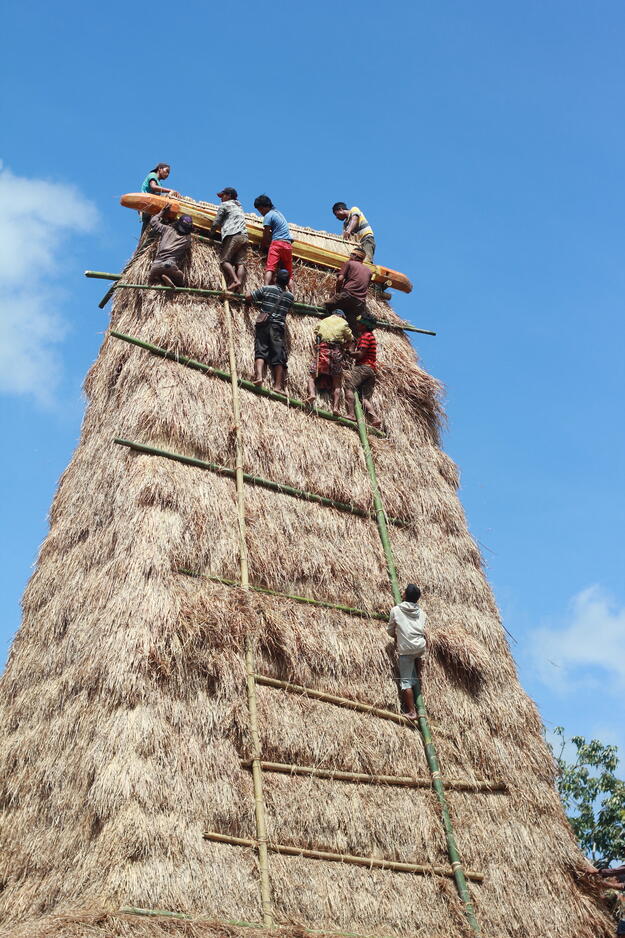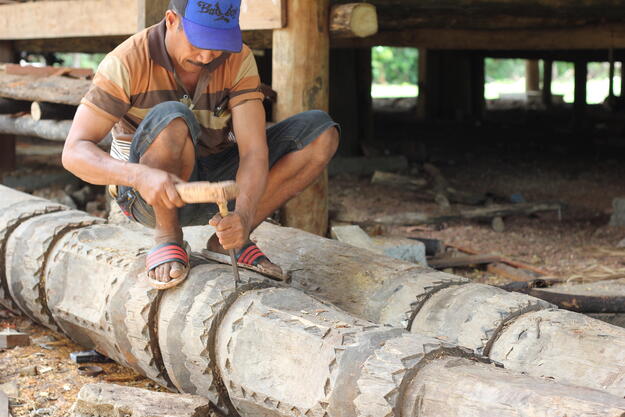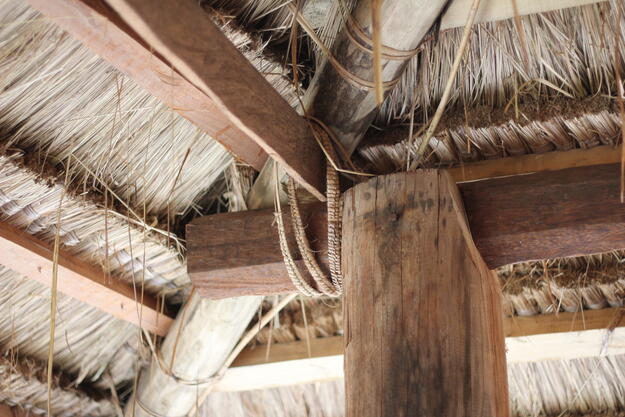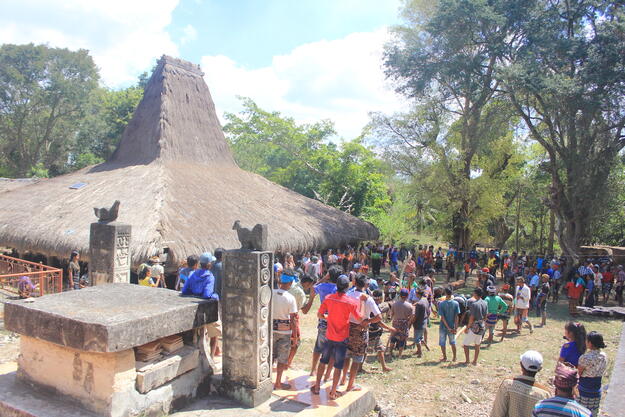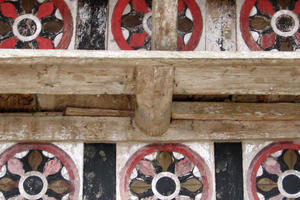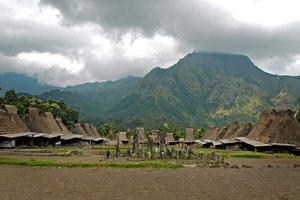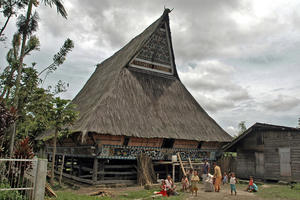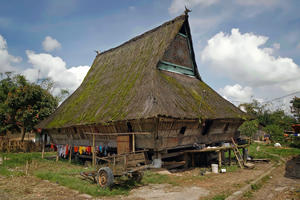Sumba Island
Site History and Significance
A Distinctly Sumbanese Living Tradition
The island of Sumba in the Indonesian archipelago is dotted with small settlements that preserve a distinctly Sumbanese living tradition. These traditional villages consist of small groups of wooden houses, striking for their very tall and steep thatched roofs, as well as burial sites. Historically, villages were located on hilltops surrounded by vegetation; to protect the inhabitants from kidnapping and enslavement, the houses are arranged in a circle or in two parallel rows, forming an open space with a sacred location at its center.
On Sumba, as in many places throughout the Indonesian archipelago, houses are imbued with layers of symbolism, with their parts mapped to the human body or oriented according to the flow of rivers and to the rising and setting sun. Four large posts, traditionally ceremonially erected in a precise sequence, form the core structure of the house, supporting the roof and delimiting the hearth. The main level of the interior is raised off the ground, leaving space underneath the house for keeping animals. The structural elements are tied together, forming flexible joints that allow houses to withstand earthquakes in one of the world’s most seismically active locations. This traditional house form is found throughout Sumba, with local variations, especially between the western and eastern parts of the island. It has even survived in contemporary construction using modern materials but following traditional forms like the iconic high roof.
Safeguarding a Body of Cultural Knowledge and Skills
Today, the majority of the island’s population of almost 800,000 continues to live in rural settlements. But the ability to repair, reconstruct, or build new houses depends on keeping alive a body of cultural knowledge and manual skills, as well as on the availability of traditional building materials. These conditions are under threat due to environmental changes and a long-term trend towards urbanization. At the same time, existing houses are highly vulnerable to fire. Fires consumed 30 traditional houses in the village of Tarung in 2017 and 16 houses in the village of Bondo Morotuo in 2018; most recently, on the evening of September 20, 2022, a fire in the village of Wainyapu destroyed 30 invaluable historic houses in a blink.
Our Involvement
2022 World Monuments Watch
The nomination of Sumba Island to the 2022 World Monuments Watch calls attention to the need to preserve traditional building skills in Sumba and to support community-oriented training that bring together the carriers of traditional knowledge and skills, interested trainees, with decision makers in local government.
For residents to sustain this way of living, they must contend with the immediate and increasing threat of fires, a result of longer dry spells driven by climate change. This threat was illustrated in dramatic fashion in September 2022, when a fire in Wainyapu consumed 80% of the village’s historic houses. Responding to this challenge, WMF is introducing fire prevention measures, equipping the community with best practices for protecting their iconic structures.
![]()
Learn More
Through the World Monuments Watch, WMF collaborates with local partners to design and implement targeted conservation programs—including advocacy, planning, education, and physical interventions in the historic built environment—to improve human well-being through cultural heritage preservation.
Sign up for our newsletter to receive regular updates on our projects, stories from the field, upcoming events, and more!
![]()
World Monuments Fund’s project at Sumba Island has been made possible, in part, by support from WMF's Crisis Response Fund.

